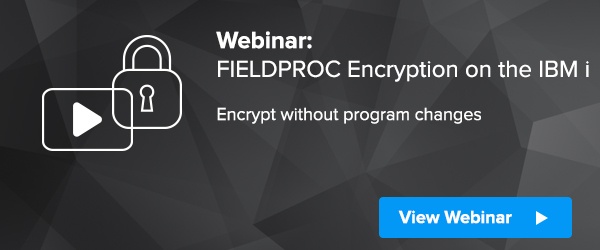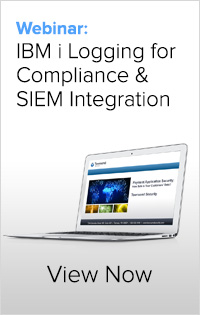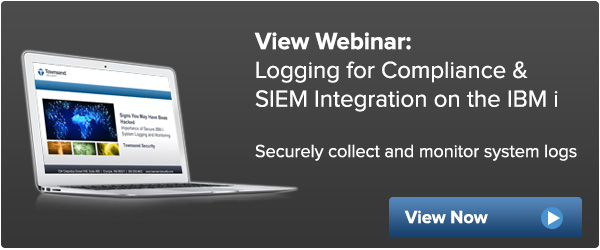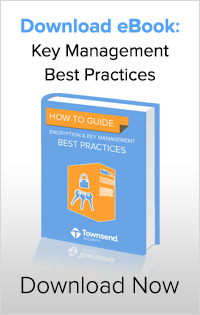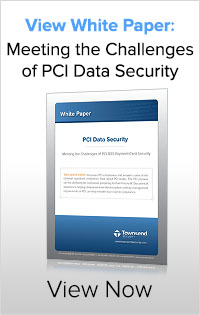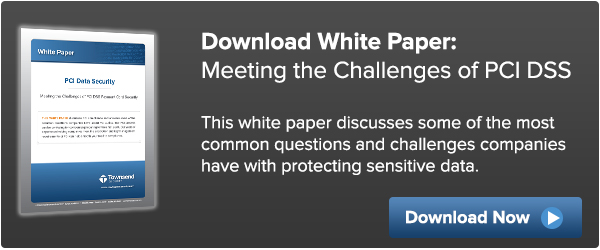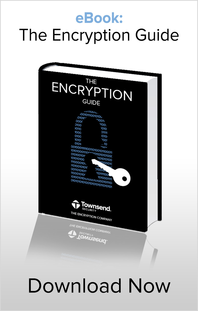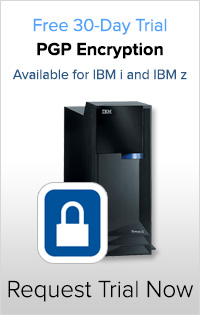IBM introduced Field Procedures (FIELDPROC, or FieldProc) on the IBM i (AS/400, iSeries) platform in V7R1 of the operating system. It is a strategically important implementation and is a permanent part of the DB2 for IBM i database going forward. The FieldProc implementation is an event-driven exit point directly in the DB2 database and is invoked for most of the standard CRUD operations (but not delete). While the FieldProc implementation can be used for many things, IBM i customers primarily use it as a mechanism to automatically encrypt and decrypt data at the column level. It is now a widely adopted and deployed method for data protection on the IBM i and IBM System z Mainframe editions of the DB2 database.
 While the benefits of the data at rest protection offered by FieldProc encryption is clear, our customers often ask us if FieldProc encryption will also protect their backups. It is a good question because there are times when making a copy of a file with FieldProc encryption causes the data to be decrypted by the copy. So does DB2 data remain protected with normal IBM i backups?
While the benefits of the data at rest protection offered by FieldProc encryption is clear, our customers often ask us if FieldProc encryption will also protect their backups. It is a good question because there are times when making a copy of a file with FieldProc encryption causes the data to be decrypted by the copy. So does DB2 data remain protected with normal IBM i backups?
Fortunately, the answer is Yes - your backups will be protected with FieldProc encryption when you use any of the normal SAVE commands on the IBM i platform including commands like Save Object (SAVOBJ), Save Library (SAVLIB), Save Save File Data (SAVSAVFDTA), Save Changed Objects (SAVCHGOBJ), and the various IBM Backup Recovery and Media Services (BRMS) commands.
While it is rare, I have seen some uses of the Copy File (CPYF) command to copy data to backup tapes or files. In this case your data will be automatically decrypted during the copy operation and will NOT be protected in the backup image. To save data in encrypted format ALWAYS use one of the IBM save commands, the IBM BRMS application, or any third party backup solution that uses the IBM SAVE commands.
Another related question that we often get is how can I verify that the data is actually encrypted on the backup image? This is a good question because security auditors often want an independent verification of the encrypted status of the data. One way to verify the encrypted status of the data is to use the IBM Dump Tape (DMPTAP) command to dump the contents of the tape after a save operation. Try saving the file without FieldProc encryption, then save it with FieldProc encryption enabled. The Dump Tape command will show the contents of the data and you can easily see unencrypted values or encrypted values in the dump reports. Note that you may need to turn off save compression in order to view the data with this method.
Another way to verify the encrypted status of data is to use the same procedure, but save the file or table to a save file (SAVF). You can then use FTP to transfer the file to your PC in binary mode and use a file viewer to review the contents. Unfortunately, you can’t use the Display Physical File Member (DSPPFM) command as it does not display save files. On your PC you might like to use a utility like UltraEdit as it can view data in the EBCDIC character format. You can easily determine that your data is encrypted in the save file.
Either of these techniques can be used to verify the encrypted status of your files when saved with FieldProc active. You can rest assured that your data is protected on backup tapes and images and that the encryption key is not stored with the data!
Townsend Security provides a FieldProc implementation in our Alliance AES/400 solution. It integrates seamlessly with our Alliance Key Manager solution which manages encryption keys through the entire key life cycle. The Alliance AES/400 solution is the only IBM i FieldProc encryption solution that is NIST validated for the AES encryption library, and which combines this level of encryption with a NIST validated encryption key management solution, giving you provable compliance with industry standards.
Backup data protection is a great added benefit to FieldProc encryption on the IBM i platform. I hope this discussion helps resolve any question you have about FieldProc encryption and backup protection.
Patrick

